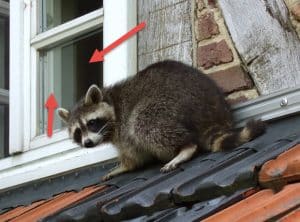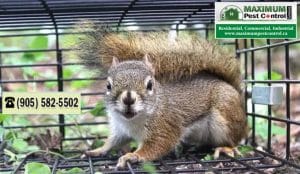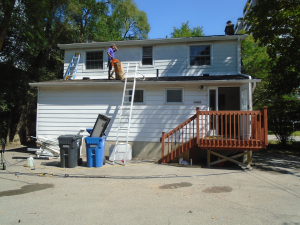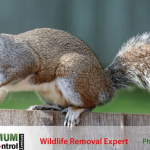
Best Tips to Prevent Wildlife Animals from Getting Indoors
Wildlife gets a lot of attention from humans, but not always for good reasons. Interestingly, the cute appearance of squirrels, skunks, raccoon’s, and the occasional possums has earned the adoration of some homeowners. In fact, some people are eager to take pictures of these small visitors as they forage for grass every once in a while in their backyard and keep feeding them much more so they keep coming back to entertain them.
But as wildlife population re-surges in big cities and suburban areas, people are increasingly becoming aware of the dangers posed by wild animals. These furry little forest dwellers have a knack for mischief. They are highly prone to garbage as it provides food for their bellies. Wild animals damage the outside structural integrity of your home, including attic electrical wiring and insulation. Even worse, they spread diseases and parasites like fleas and ticks.
Unfortunately, wildlife animals won’t think twice about entering your home when cold weather hits. Yet, these disease-ridden invaders display decreased wariness around people and pets. Here are 5 professional tips to prevent wildlife animals from getting indoors.
Why Do Wildlife Animals Invade Homes?
The sad truth is that wildlife animals have become dependent on human habitats. When temperatures drop and cold weather hits, wild animals go in search of three basic things – food, water, and a warm shelter to overwinter them from freezing. These unwanted visitors will invade your home if they can benefit from it.
Wildlife animals can also take up residence in homes because they feel safer than in their natural habitats. For instance, mice, rats, raccoon, squirrels, and other types of wildlife can seek refuge in your home to stay protected from predators like foxes, coyotes, weasels, and raccoon’s. The sheer number of enemies in the wild that liken small wild animals to their prey is enough to send the small invaders hiding in your basement, garage, attic, and even walls especially with mice as they are number 1 invaders for residential houses.
Sadly, our homes also seem increasingly conducive to wild animals because they can get ample food and enjoy a higher survival rate. Wildlife animals are pretty opportunistic feeders. If there’s pet food left outside, rodents such as rats and mice will deliberately invade your yard.
Black bears have an incredible sense of smell and will enter your yard if there’s pet food outdoors or food products in your garbage. On the other hand, raccoon’s are very lazy omnivores who hate to work hard to find food. They will sneak into your home to feed on literally anything they can get their paws on, including the foods in your fridge. Foxes are particularly clever invaders; they’ll come to your yard if there are birds, rodents, or amphibians.
How Do Wildlife Animals Invade Homes?
Wild animals are not only sneaky but also quite clever. Some invasive species, like rats, are supremely smart, cunning, and resourceful. They have successfully colonized most homes by finding creative ways to enter and hide inside. Other wild animals like squirrels display an impeccable array of tricks that help them break into your home, even after you’ve sealed your windows and doors.
Here are ways that wildlife animals get indoors:
- Rodents can get into your home in many ways. For instance, while mice can squeeze under an improperly sealed door, rats can gnaw holes into plastic, wood, aluminum, bricks, pipes, flooring, and baseboards to enter your home easily.
- Sometimes, wildlife animals don’t necessarily come into your home; they can dig holes underneath it. Diggers such as groundhogs (woodchucks) and skunks can dig holes in your yard or underneath your home in search of shelter. Voles, moles, and pocket gophers are other common culprits that burrow holes in the yard.
- Rodents can shrink their bodies and exploit unimaginably small holes to enter your home. Rats have been found to squeeze through an opening as small as 20mm wide, while mice can get in through smaller gaps, 6-7mm in width.
- Some wild animals, such as squirrels and raccoon’s, are excellent climbers. They can climb onto your roof and tear a hole in order to get indoors. It’s easy for such climbers to get down via an open chimney into your home or push the exterior house soffit to squeeze inside.
- Last but not least, wild animals can sneak into your home via open doors and windows.
6 Awesome Tips to Prevent Wildlife Animals from Getting Indoors
Use Barriers
One of the most reliable and effective ways to prevent wildlife animals from getting indoors is by using barriers. This includes installing a fence on the perimeter of your home. You should ensure the fence is at least 6 feet high to keep out all types of sneaky invaders from your backyard. The ideal fence should extend at least 18 inches underground to keep diggers like skunks away.
Get Rid of any Poop in the Yard.
Some omnivore invaders, such as coyotes, are extremely territorial. They aggressively defend their territories against other animals, such as your pet dog. If coyotes smell your dog’s poop, they consider it a threat to their territory and will break into your yard to remove the threat (your dog). Getting rid of dog poop outdoors is an excellent way of removing the pheromones that mark territories. This helps reduce attention from wild animals in the area to your Yard.
Don’t Feed Wildlife
Leaving pet foods outdoors or food products in the garbage bin outside is arguably the best way to attract wild animals into your home. Wild animals like rodents, black bears, and other invaders within the area will be happy to feast on the free buffet. One free meal will have the opportunistic invaders sticking around for another free meal and keep coming back.
Even worse, the presence of prey like squirrels in your yard attracts predators such as wild cats and foxes. The predators might even consider your yard their perfect hunting ground. Ensure your pets are fed indoors to avoid encounters with wild animals in your home.
Eliminate Possible Wildlife Shelters
Wild animals are opportunistic invaders who can take up residence anywhere, including in piles of wood near your home. To eliminate possible wildlife shelters, immediately get rid of accumulated trash, debris, dead trees, and tall grass from your compound.
Cap Your Chimneys
As seen above, chimneys are a perfect entry point for climbers such as squirrels, raccoon’s, and birds. You should cap your chimney, seal gaps around your roof vents, and repair/replace damaged shingles promptly to keep wild animals out of your home.
Final Thoughts: Seek Professional Help
Unfortunately, the population of wildlife animals in urban and suburban areas has increased drastically. Yet, wild animals pose severe risks to your house and the people/pets who live in it. As such, you must defend your property against wildlife invaders by ensuring they do not get inside in the first place.
If wild animals have found entry into your home, the best thing to do is call wildlife control experts Maximum pest control services (905) 582-5502 to inspect your property and identify possible entry points. Our wildlife control professionals have years of experience trapping and removing wildlife from homes without harming the animals or endangering your family, pets, or property.
The experts will seal all possible wildlife entry points and go over every detail to ensure your home is protected from unwelcome wild animals. For immediate, humane, and effective wildlife control. Contact Insured and Bonded Maximum pest control services Today (905) 582-5502 or (905) 330 2102. Are you looking to seal, block all barriers of your house? Maximum handyman rodent exclusion will help you to do so, Contact Us Now!








